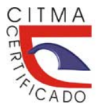Mathematical statistical models to estimate pressure and flows in micro-irrigation systems
DOI:
https://doi.org/10.5281/zenodo.14103169Keywords:
mathematical statistical model, microirrigation systems, multiple outlet pipesAbstract
Introduction: mathematical statistical models are essential for the design and management of microirrigation systems and contribute to improving the efficiency, sustainability and profitability of these systems. Objective: The objective of the work was to develop mathematical statistical models for the accurate estimation of pressure and flow rates in microirrigation systems with multiple outlet pipes in the 14 de Julio organoponic. Method: the calibration and validation of the developed models was carried out using the coefficient of determination and the average percentage error. Results: the results of the application of the models in the microirrigation system demonstrated their ability to know the behavior of the flow and pressure in any part of the lateral pipe and generate mathematical statistical models of exponential, potential and polynomial type with high coefficients of determination and low average percentage error. Conclusion: Regression models constitute a useful tool for the simulation of pressure and flows in pressurized systems as long as they are previously calibrated and validated under experimental conditions.
Downloads
References
Ángeles, V., Arteaga, R. e Ibáñez, L. A. (2010). Dimensionamiento de tuberías con salidas múltiples convencionales y telescópicas con distribución discreta de caudales. Ingeniería de Agua, 17(1), 51-68. https://iwaponline.com/IA/article-abstract/17/1/51/68512
Garcés, J. T., Camposano, O. C., Macías, C. S. y Vásquez, V. S. (2018). Calidad del riego por aspersión subfoliar en cacao (Theobroma cacao L.) en la finca San Vicente, Los Ríos, Ecuador. La Técnica, (20), 1-10. https://dialnet.unirioja.es/servlet/articulo?codigo=6723166
Gonzales, E. A. (2020). Comportamiento hidráulico del sistema de riego por aspersión mediante herramientas computacionales, Paras, Ayacucho 2020 [tesis de pregrado, Universidad César Vallejo] Reservorio Institucional UCV. https://repositorio.ucv.edu.pe/handle/20.500.12692/63382
Girola, J. C., Sosa, N. y Mujica, A. (2020). Desarrollo del software RIEDI para el diseño de sistemas de riego localizado. Revista Universidad & ciencia, 9(1), 43-57. https://revistas.unica.cu/index.php/uciencia/article/view/1253
Ladino, E. O., García, C. A. y García, M. C. (2020). La implicancia económica mediante Newton Rapshon para el desarrollo una aplicación Android para el diseño de diámetro de tuberías a presión. Aglala, 11(1), 149-168. http://revista.curn.edu.co/index.php/aglala/article/view/1577
Marín, G. (2021). Algunas concepciones CTSA de estudiantes de noveno grado sobre conceptos termodinámicos. Tecné, Episteme y Didaxis: TED, (49), 239-254. http://www.scielo.org.co/scielo.php?pid=S0121-38142021000100239&script=sci_arttext
Mola, B., Bonet, C., Rodríguez, D., Guerrero, P., Avilés, G. y Noa Torres, Y. (2019). Calidad del agua en la producción de organopónicos. Ingeniería Agrícola, 9(2). https://ojs.edicionescervantes.com/index.php/IAgric/article/view/1098
Mullo, J. I. (2016). Diseño de un sistema de riego parcelario para la comunidad San Pedro, ubicada en la Parroquia La Matriz, Cantón Guamote, Quito [Tesis de pregrado, Universidad de San Francisco de Quito]. Repositorio Institucional USFQ. http://repositorio.usfq.ec/handle/23000/5719.
Riaño, F. (2021). Los aportes de Leonhard Euler al desarrollo de la Hidráulica. Ingeniería Hidráulica y Ambiental, 42(3), 82-102. http://scielo.sld.cu/scielo.php?pid=S1680-03382021000300082&script=sci_arttext&tlng=en
Downloads
Published
How to Cite
Issue
Section
License
Copyright (c) 2024 Universidad & ciencia

This work is licensed under a Creative Commons Attribution-NonCommercial-ShareAlike 4.0 International License.





















